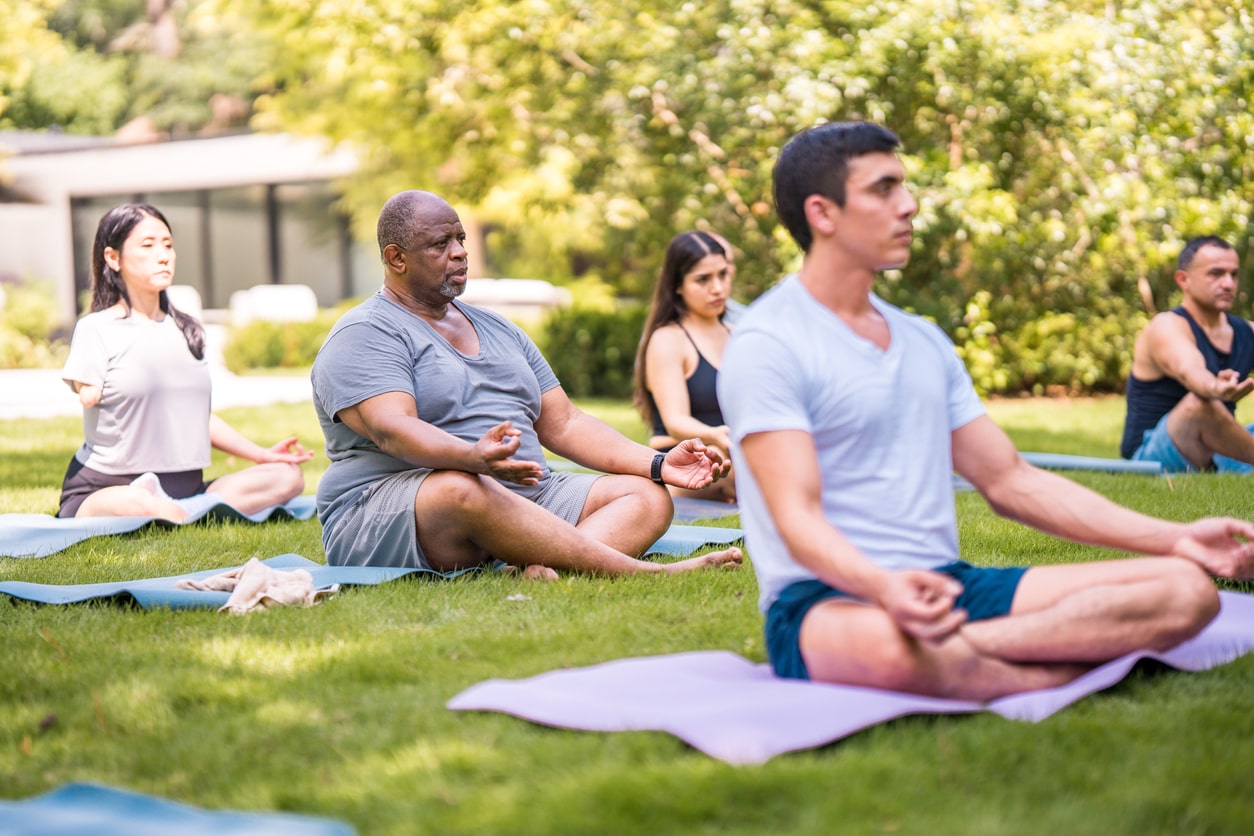Now Reading: Yoga for Addiction Recovery: Mindful Movement for Lasting Healing
-
01
Yoga for Addiction Recovery: Mindful Movement for Lasting Healing
Yoga for Addiction Recovery: Mindful Movement for Lasting Healing

Introduction
Recovering from addiction is more than breaking a habit—it’s about healing the mind, body, and spirit. One powerful tool in this journey is yoga for addiction recovery. Yoga combines physical movement, breathing techniques, and mindfulness practices to support long-term sobriety. It encourages inner peace, emotional regulation, and physical resilience—all of which are essential during recovery.
In this article, we explore how yoga for addiction recovery can help reduce stress, support emotional healing, and promote a more balanced, substance-free life.
Why Yoga Works in Addiction Recovery
Addiction often stems from emotional pain, trauma, and an inability to cope with stress. Substances may offer temporary relief, but they take a toll on mental and physical health. Yoga provides a healthy, sustainable alternative to manage emotions and reduce cravings.
Practicing yoga for addiction recovery supports:
- Mindfulness and awareness
- Emotional regulation
- Improved physical health
- Stress reduction
- Connection with self and others
According to the National Institutes of Health (NIH), incorporating mindfulness practices like yoga into addiction treatment can improve outcomes by helping people manage stress and emotional triggers (NIH, 2022).
Physical Benefits of Yoga for Addiction Recovery
Recovery can be hard on the body. Many people experience fatigue, insomnia, body aches, and restlessness, especially in early recovery. Yoga supports physical healing through:
1. Improved Sleep Quality
- Yoga calms the nervous system and prepares the body for restful sleep.
- Gentle evening yoga sequences promote relaxation and stress relief.
2. Detoxification and Circulation
- Certain yoga poses stimulate the lymphatic system and aid in removing toxins from the body.
- Improved blood flow boosts energy and supports natural healing processes.
3. Increased Strength and Flexibility
- Yoga builds muscle tone and physical endurance, which often decline during active addiction.
- It also helps restore balance and mobility, especially important after substance misuse.

Emotional and Mental Benefits of Yoga for Addiction Recovery
1. Emotional Regulation
- Deep breathing and mindfulness techniques reduce impulsive reactions and mood swings.
- Yoga teaches us to sit with discomfort without running from it—key for staying sober.
2. Stress and Anxiety Reduction
- Studies show that yoga reduces cortisol (the stress hormone).
- Practicing regularly helps lower anxiety, a common relapse trigger.
3. Boosts Self-Esteem and Confidence
- Yoga encourages self-compassion, which is often lacking in those recovering from addiction.
- Meeting small physical goals in yoga builds a sense of achievement and control.
4. Mind-Body Connection
- Addiction often disconnects people from their bodies.
- Yoga rebuilds this connection by helping individuals feel safe and present within themselves.
How to Start Practicing Yoga for Addiction Recovery
You don’t need to be flexible or experienced to start yoga. All you need is an open mind and a willingness to try. Here’s how to begin:
1. Start with Gentle Yoga Styles
- Hatha Yoga – Great for beginners; focuses on basic postures and breathing.
- Restorative Yoga – Deeply relaxing and helps with anxiety and insomnia.
- Yin Yoga – Slow-paced and meditative, focusing on deep tissue stretches.
2. Join Recovery-Focused Yoga Classes
Many communities offer yoga classes designed for people in addiction recovery. These often include discussions, peer support, and guided meditation tailored to the emotional needs of individuals in recovery.
Check with local treatment centers, yoga studios, or online platforms like:
- Yoga of 12-Step Recovery (Y12SR)
- SHE RECOVERS Yoga
3. Create a Simple Home Practice
- Set aside 10–20 minutes a day.
- Use YouTube or yoga apps with guided videos for recovery-focused practices.
- Focus on consistency, not perfection.
4. Use Breathwork to Manage Cravings
Breathing techniques (pranayama) help calm the mind and body. Try:
- Alternate Nostril Breathing – Balances mood and reduces anxiety.
- Box Breathing – Inhale, hold, exhale, and pause—all for 4 counts. Helps with emotional grounding.
Sample Yoga Poses for Addiction Recovery
Here are a few beginner-friendly poses that support healing:
1. Child’s Pose (Balasana)
- Calms the nervous system
- Promotes rest and surrender
2. Legs-Up-the-Wall (Viparita Karani)
- Reduces anxiety
- Eases fatigue and improves circulation
3. Cat-Cow Pose (Marjaryasana/Bitilasana)
- Improves spinal flexibility
- Connects breath with movement
4. Seated Forward Fold (Paschimottanasana)
- Encourages introspection and calm
- Gently stretches the back and legs
5. Corpse Pose (Savasana)
- Enhances relaxation
- Integrates the physical and emotional benefits of the practice
Combining Yoga with Other Recovery Tools
Yoga is most effective when used alongside traditional treatment methods, such as:
- Therapy or counseling
- Support groups like AA, NA, or SMART Recovery
- Healthy nutrition and sleep routines
- Journaling and self-reflection practices
A holistic recovery plan that includes yoga empowers individuals to stay grounded, focused, and emotionally stable.
Conclusion
Yoga for addiction recovery offers a powerful and accessible way to support healing on all levels. Through gentle movement, mindful breathing, and deep self-awareness, yoga provides recovering individuals with tools to navigate triggers, reduce stress, and embrace long-term sobriety.
Whether you’re in early recovery or further along the journey, incorporating yoga into your daily routine can help you reconnect with yourself and build a more peaceful, empowered life.
























